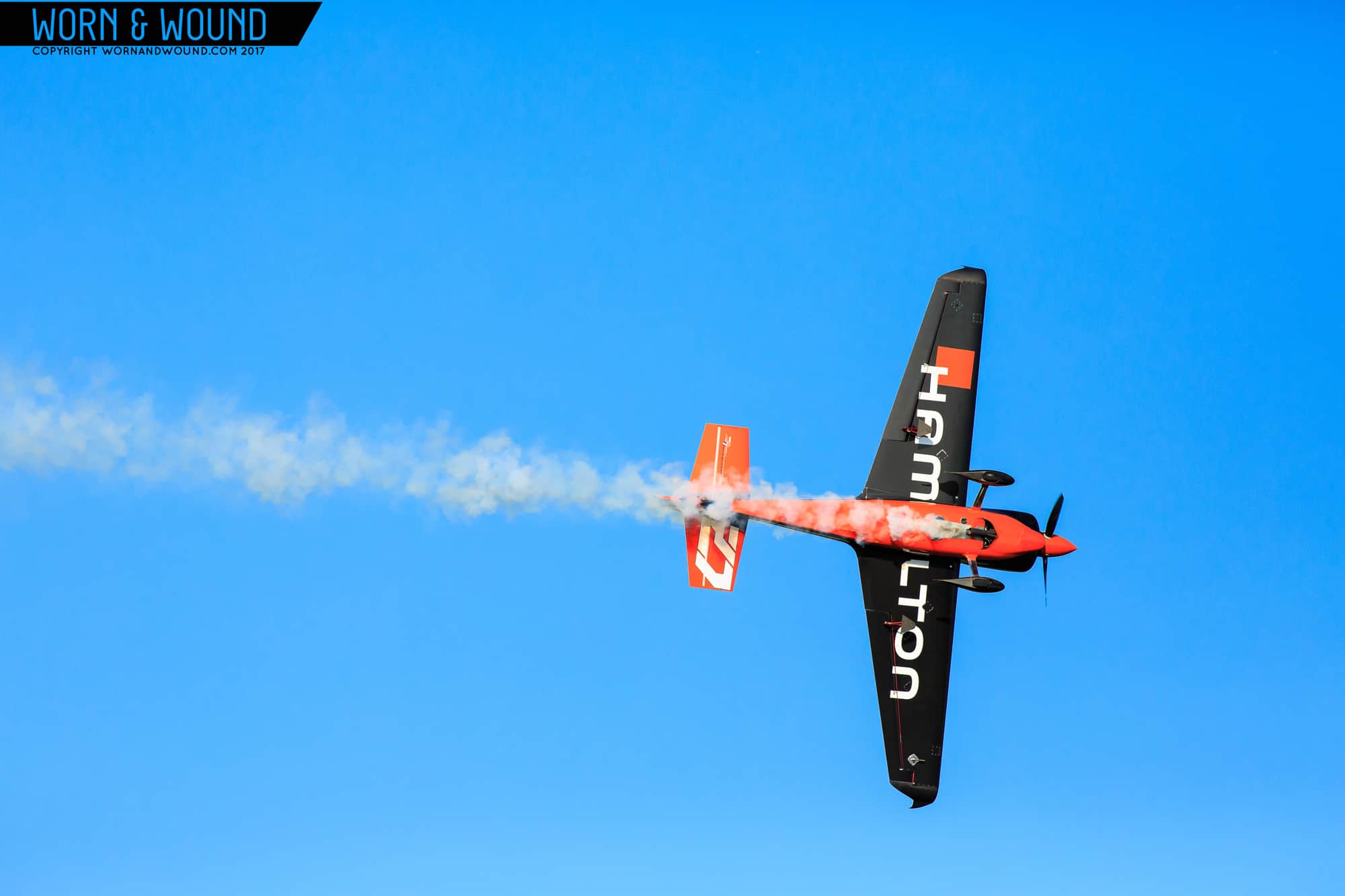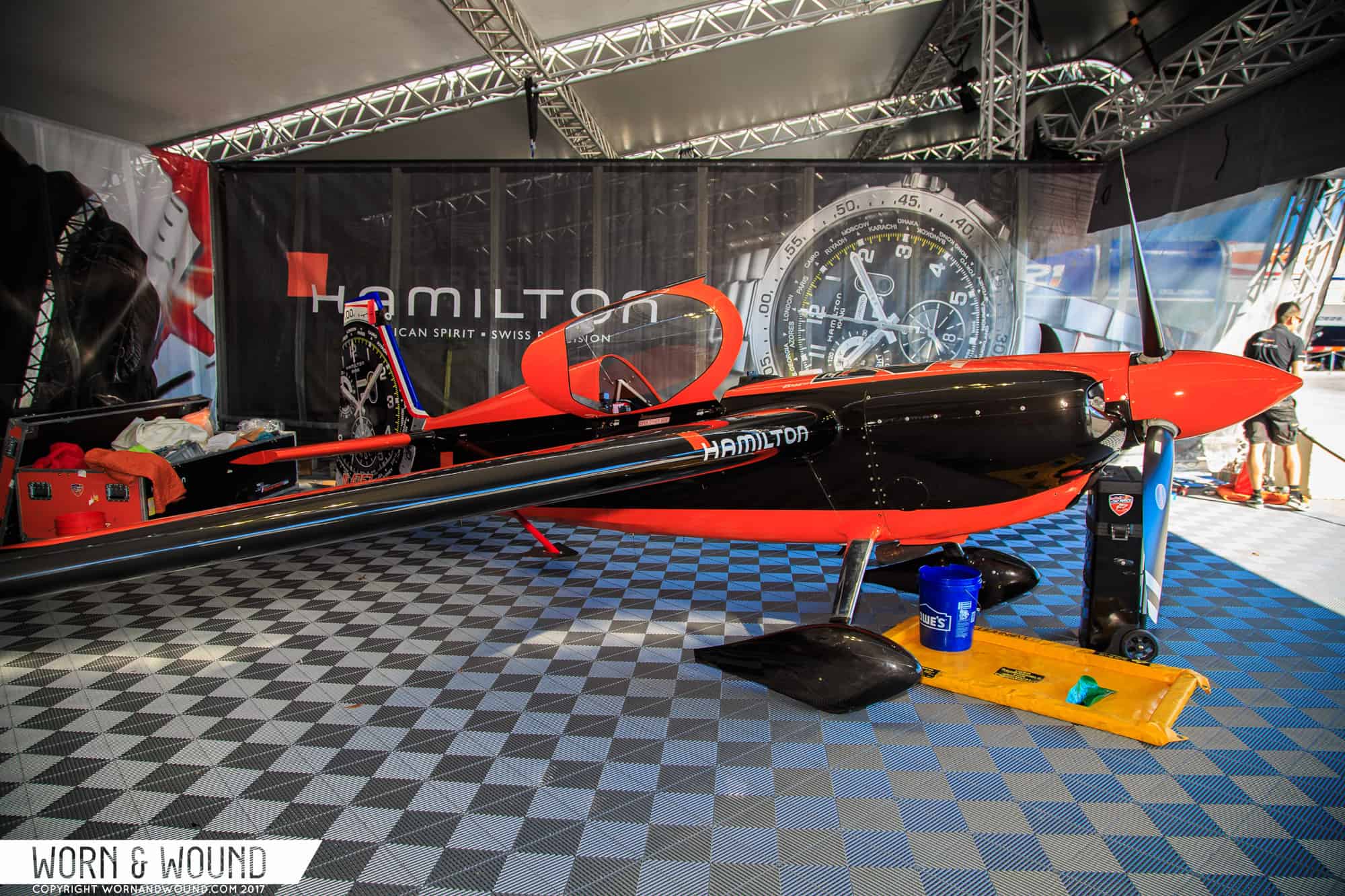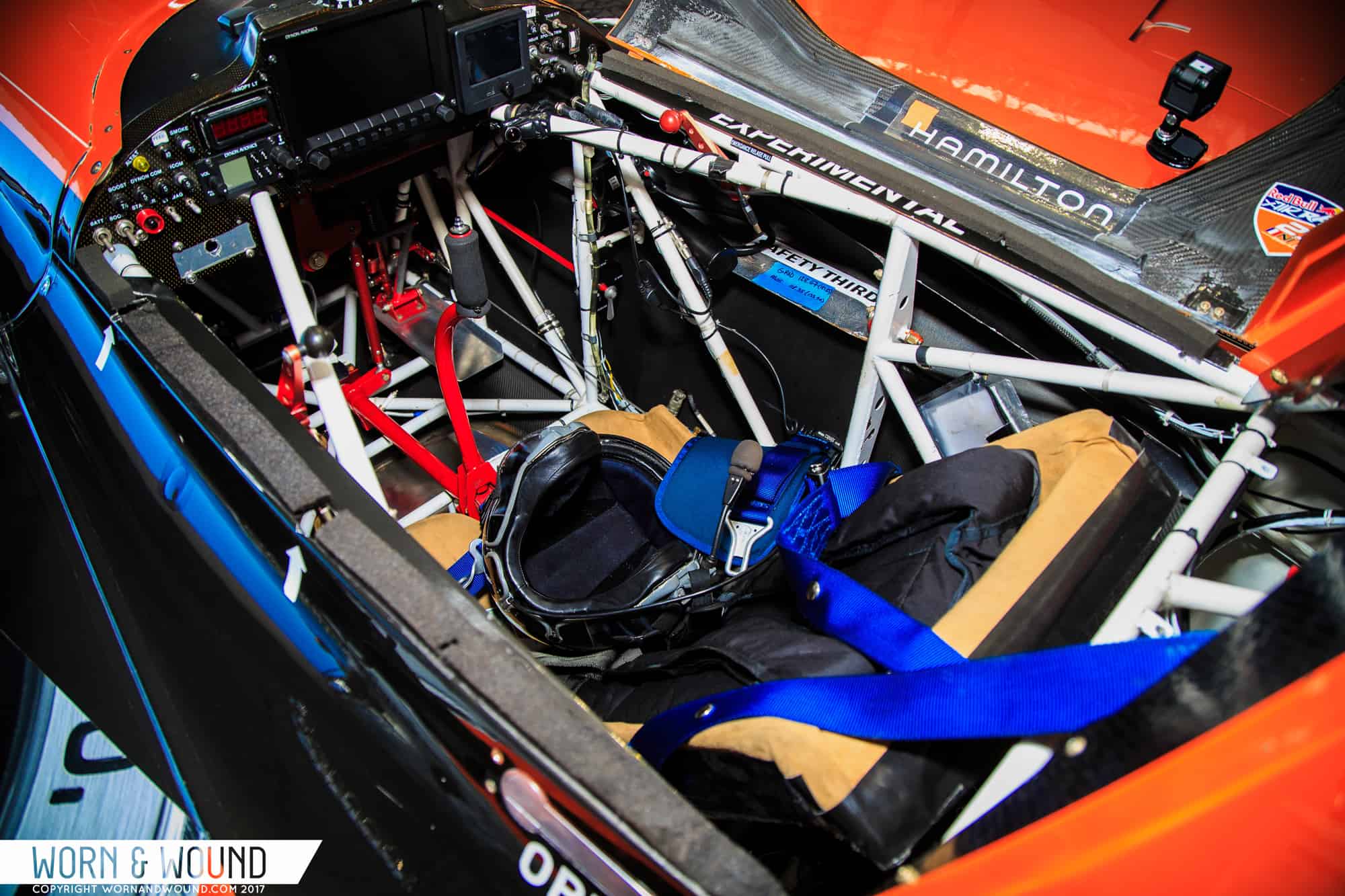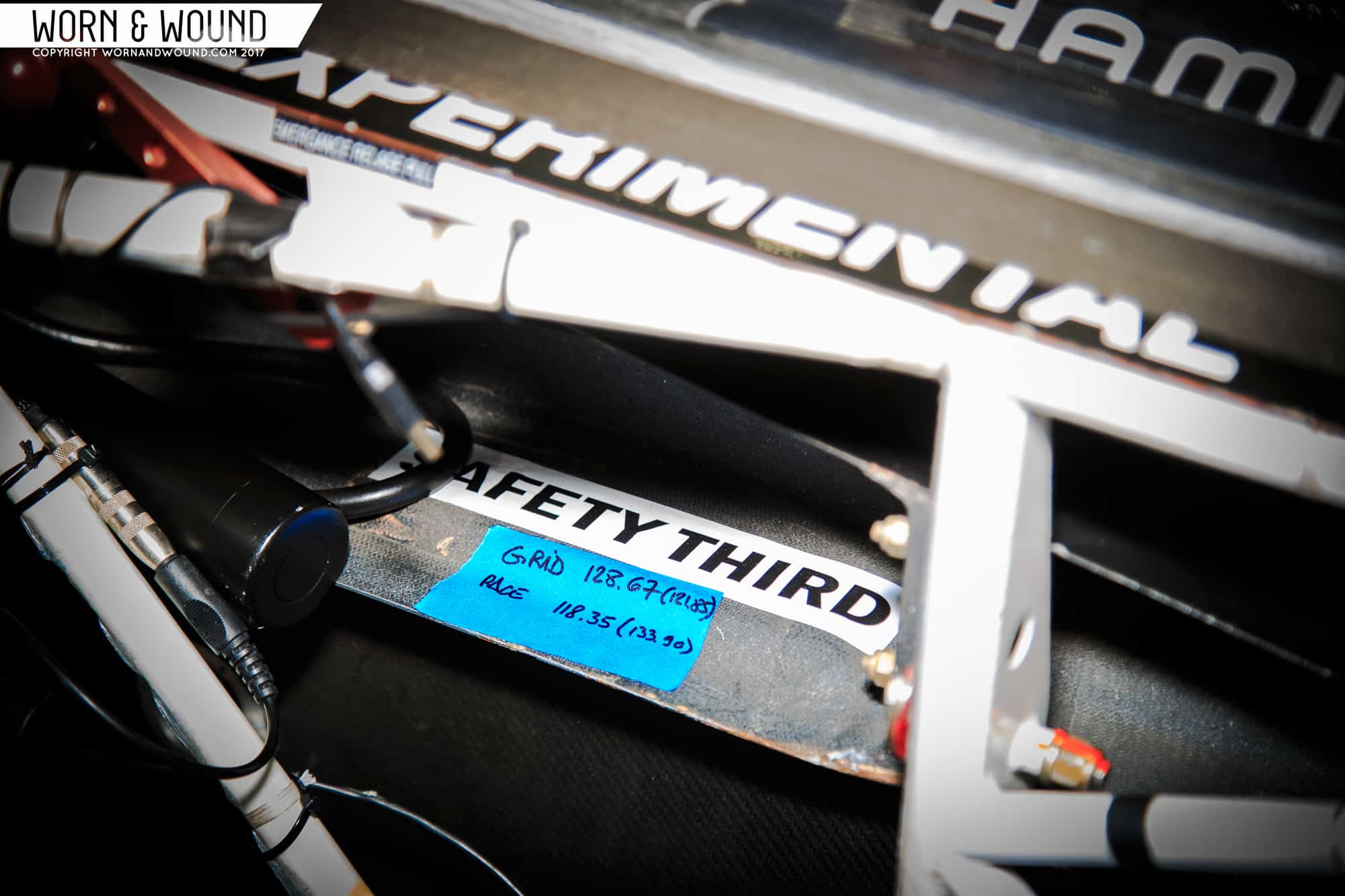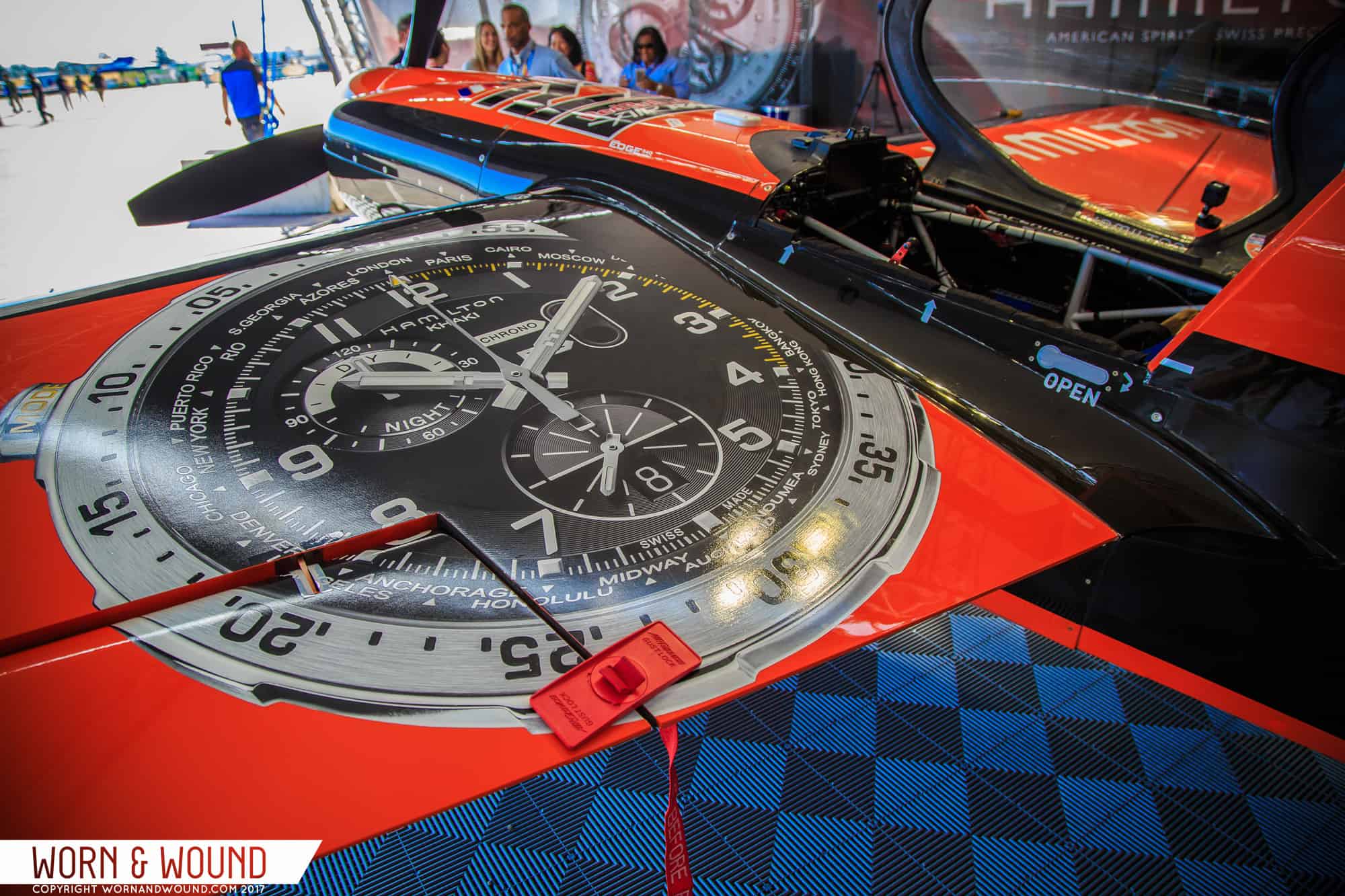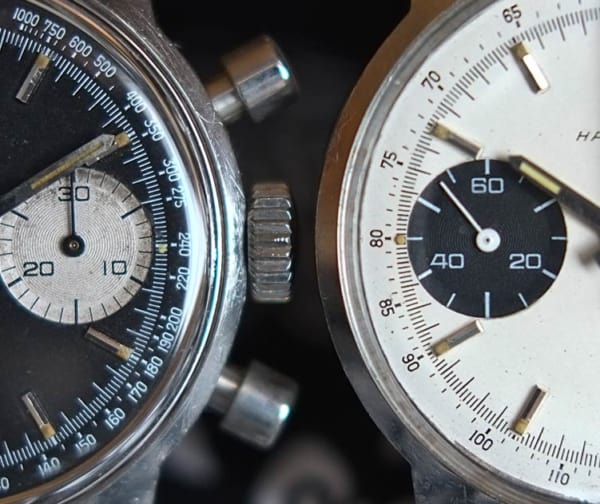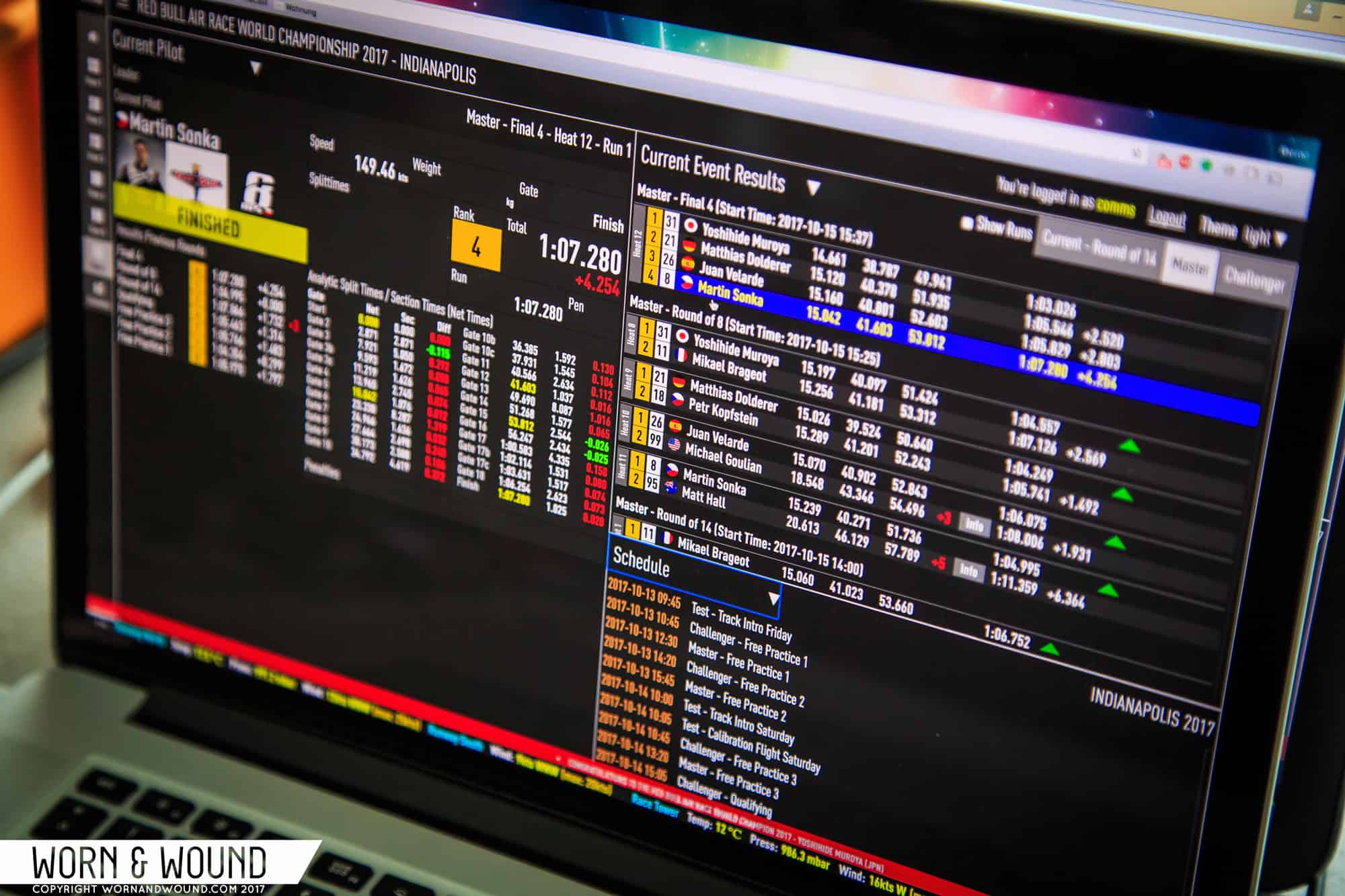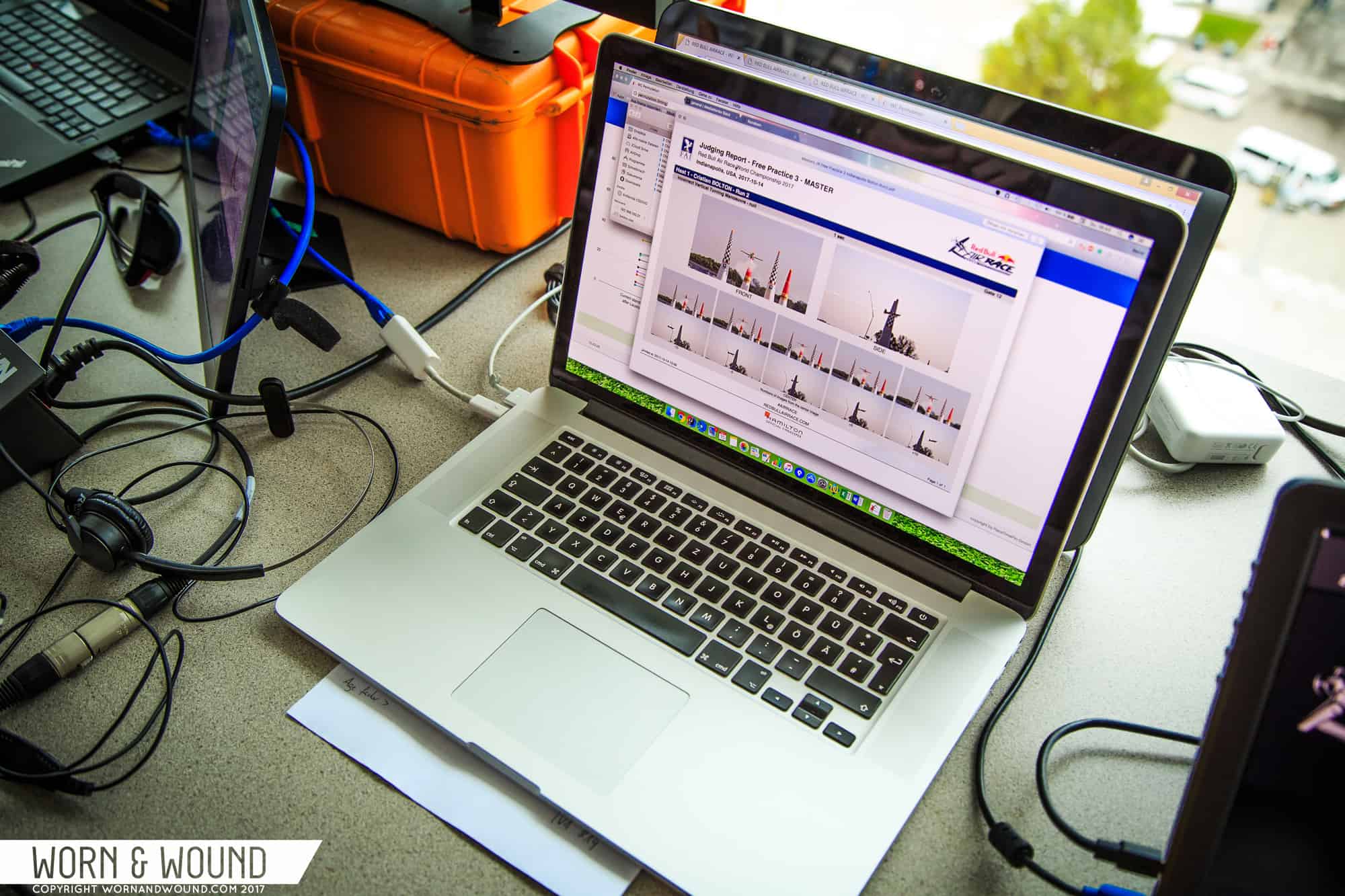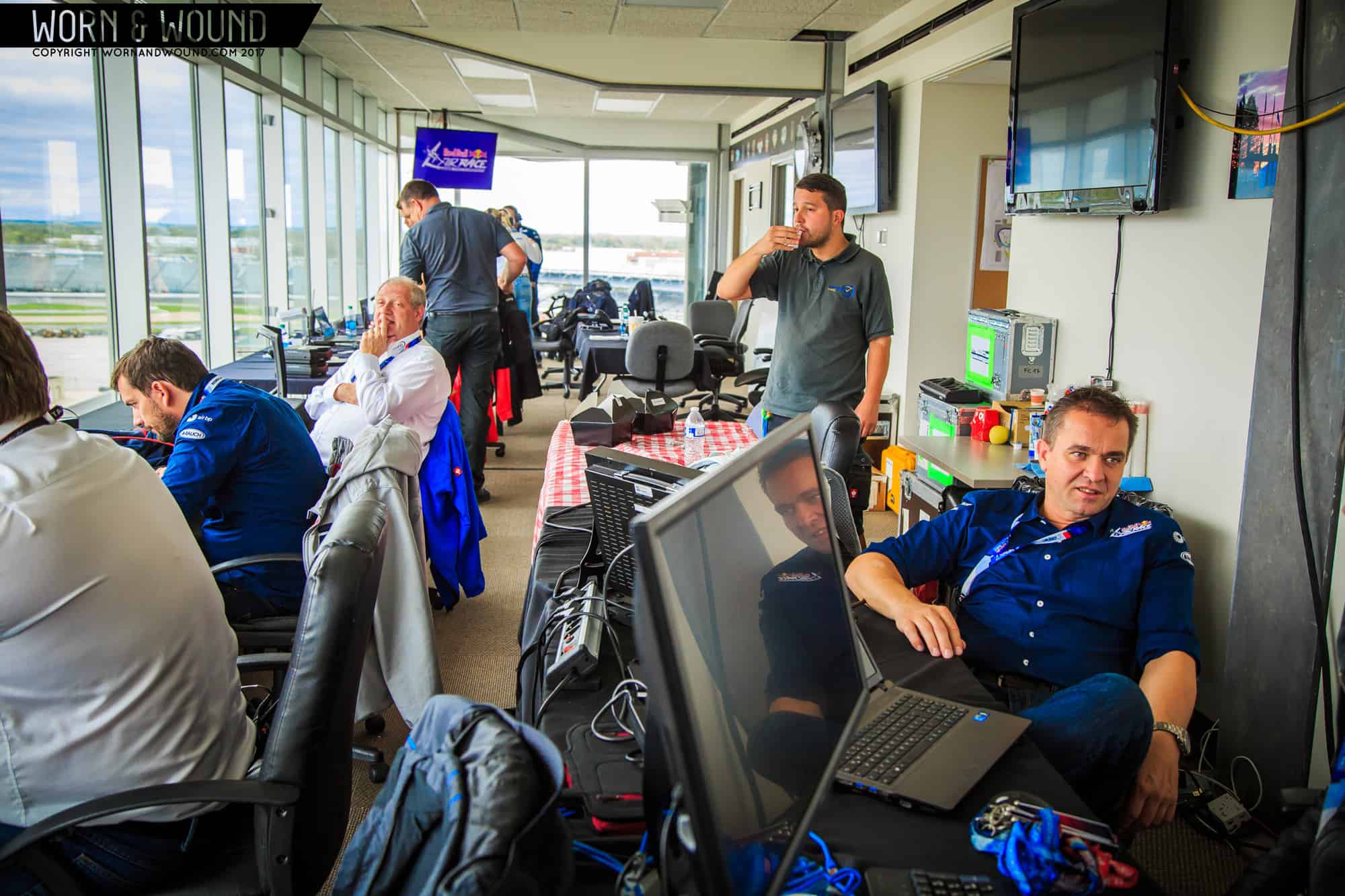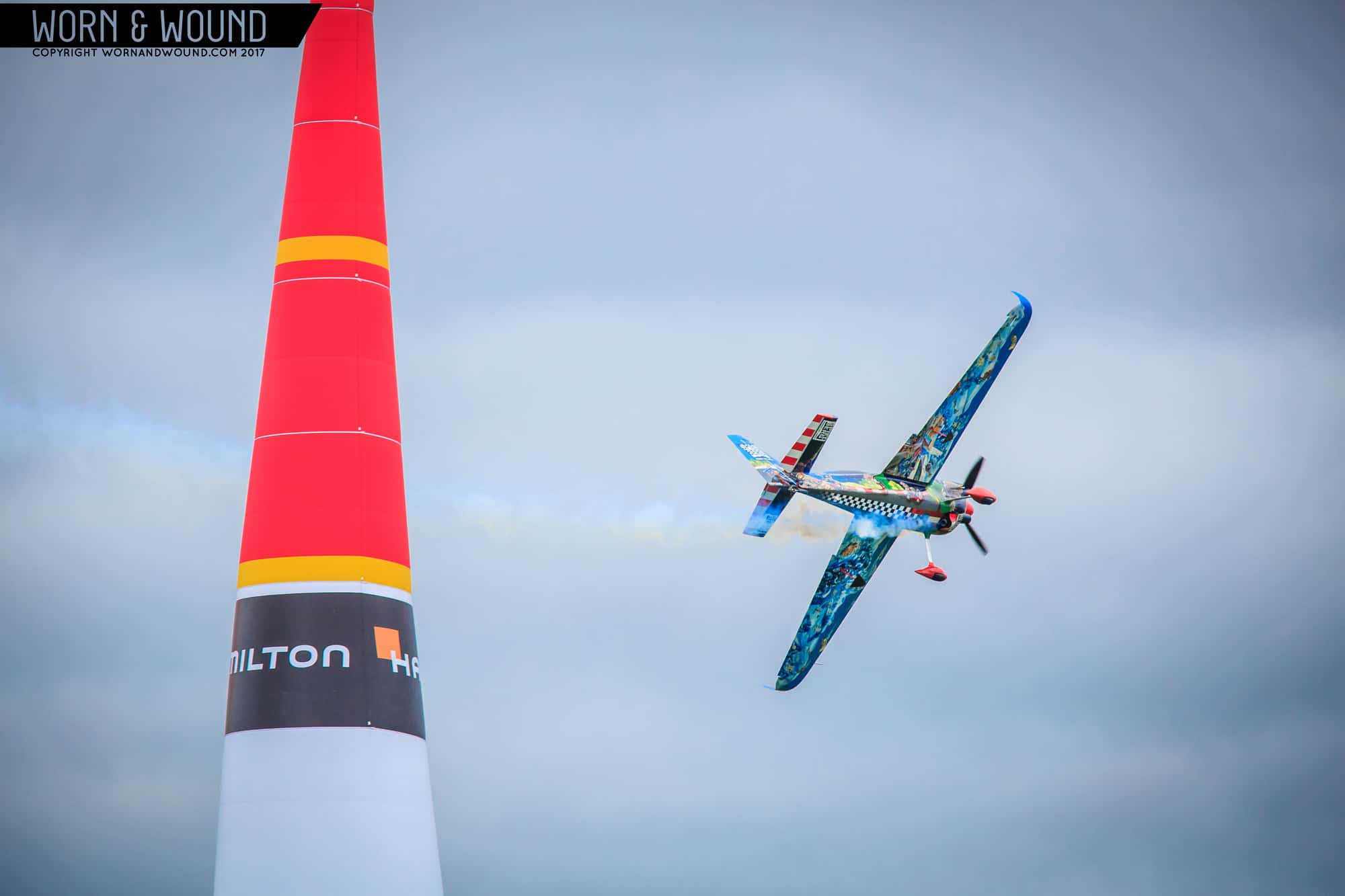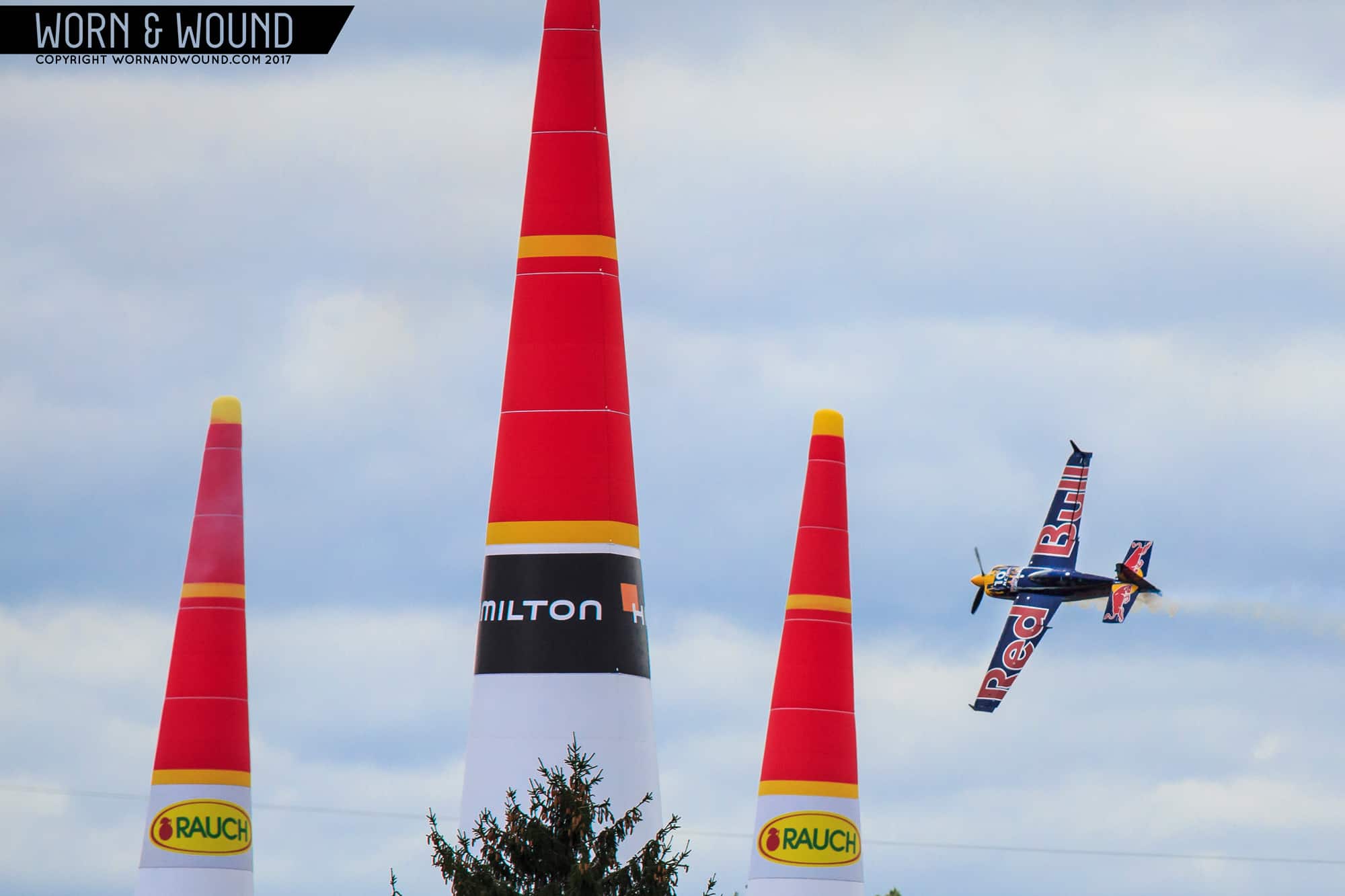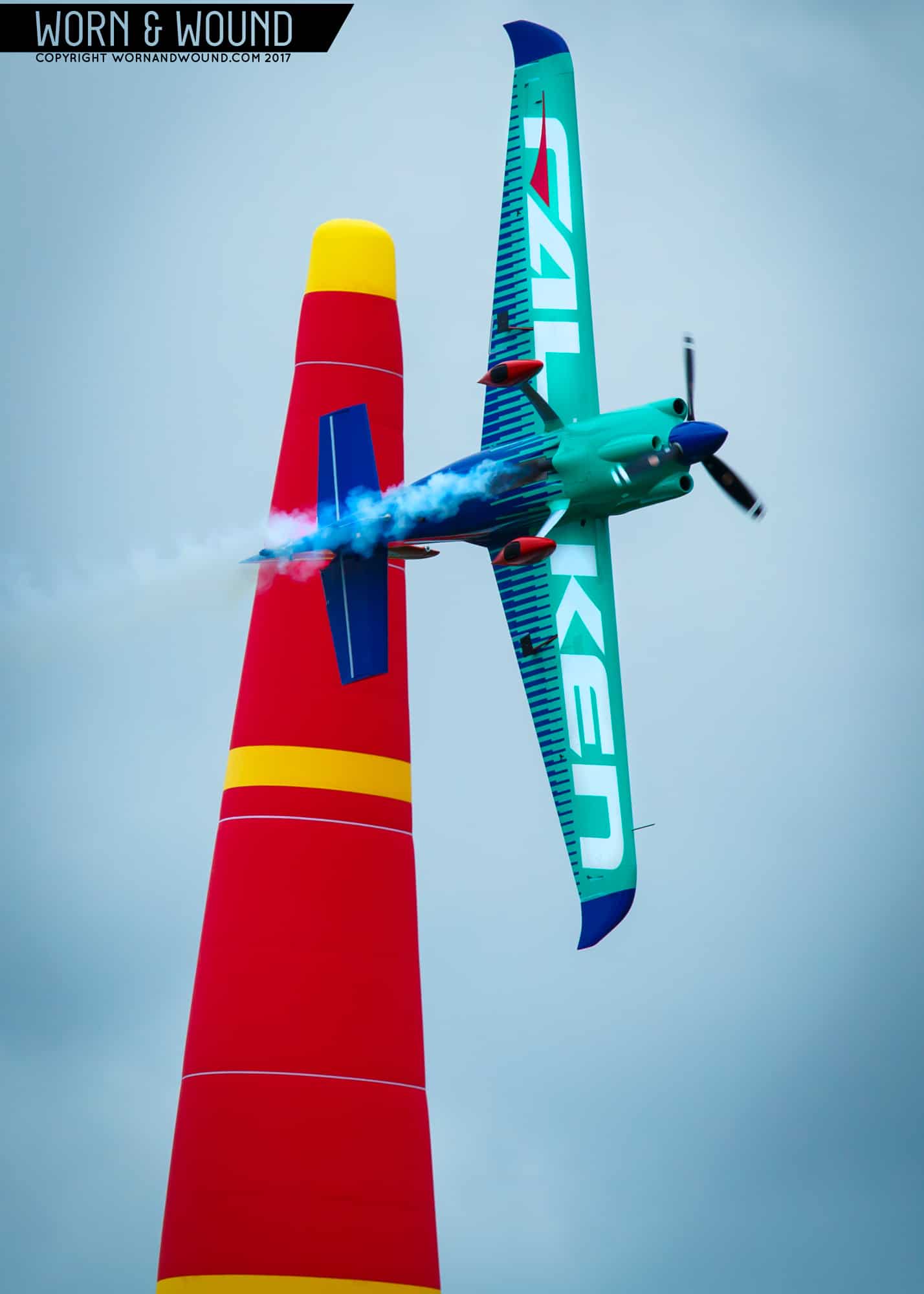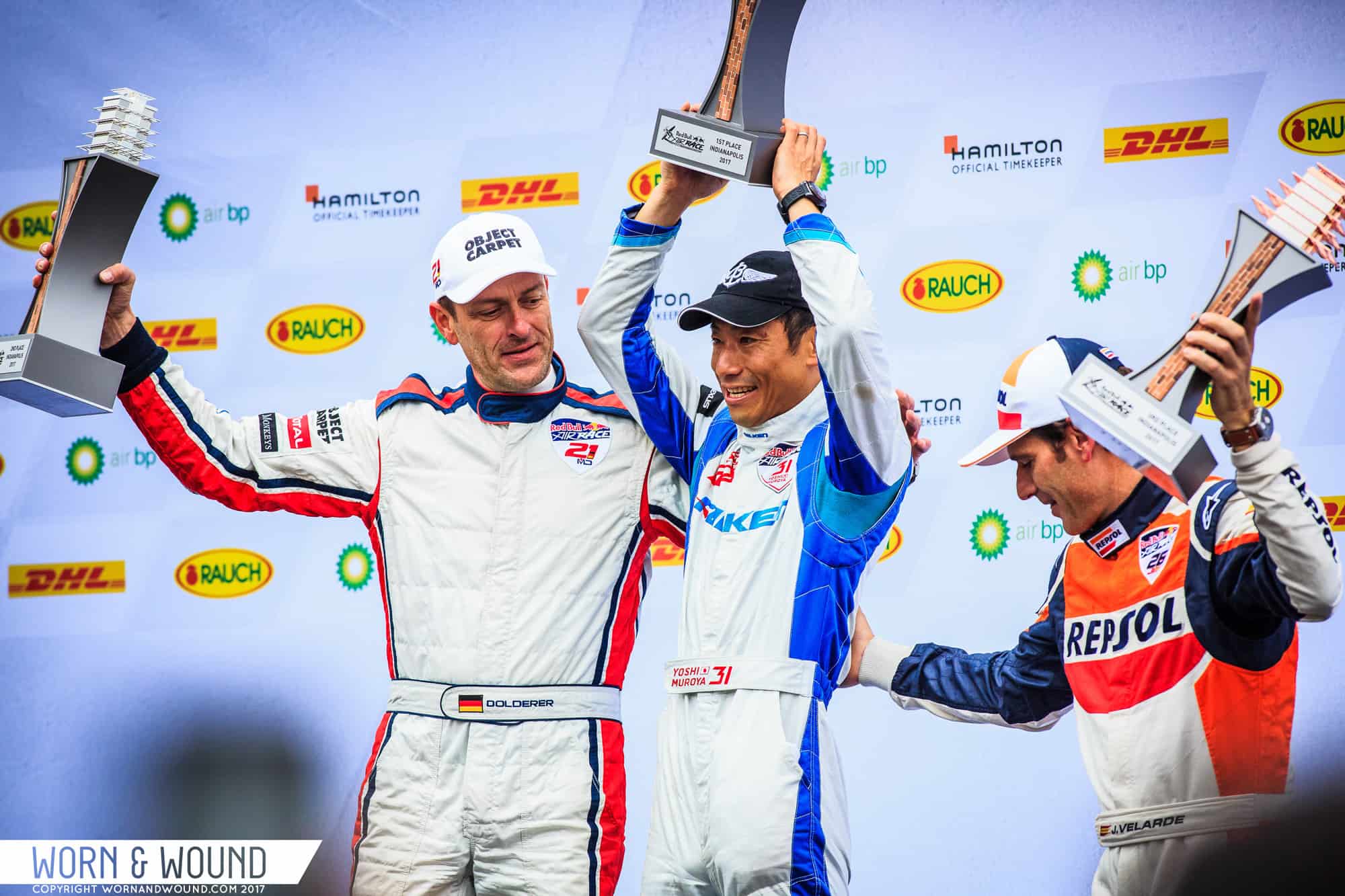The Indianapolis Motor Speedway is more than a cathedral of speed—it’s the Vatican. Since 1911, the fastest men in the world have come to these two-and-a-half miles and four corners to add their faces to the greatest prize in motorsports: the magnificent Borg-Warner Trophy. The Yard of Bricks has been on my bucket list since before I could walk, but I’m almost embarrassed to say I had never made the pilgrimage before. And what better partner to explore the Great American Race Track with than Hamilton. Hamilton’s involvement in the globe-trotting Red Bull Air Race series runs deep; not only have they become the official timekeeper for the series in 2017, Team Hamilton has been partnered with veteran pilot Nicolas Ivanoff since 2005.
Spirits were high we landed in Indianapolis for the beginning of the race weekend. The lead-up to the race weekend itself was ripe with drama: as the championship entered its final round, the Red Bull Air Race world title was still wide open. Four out of the fourteen pilots in the series were still within striking distance of the prize, with enough championship points left up for grabs for any of the four to have a realistic shot at the win.
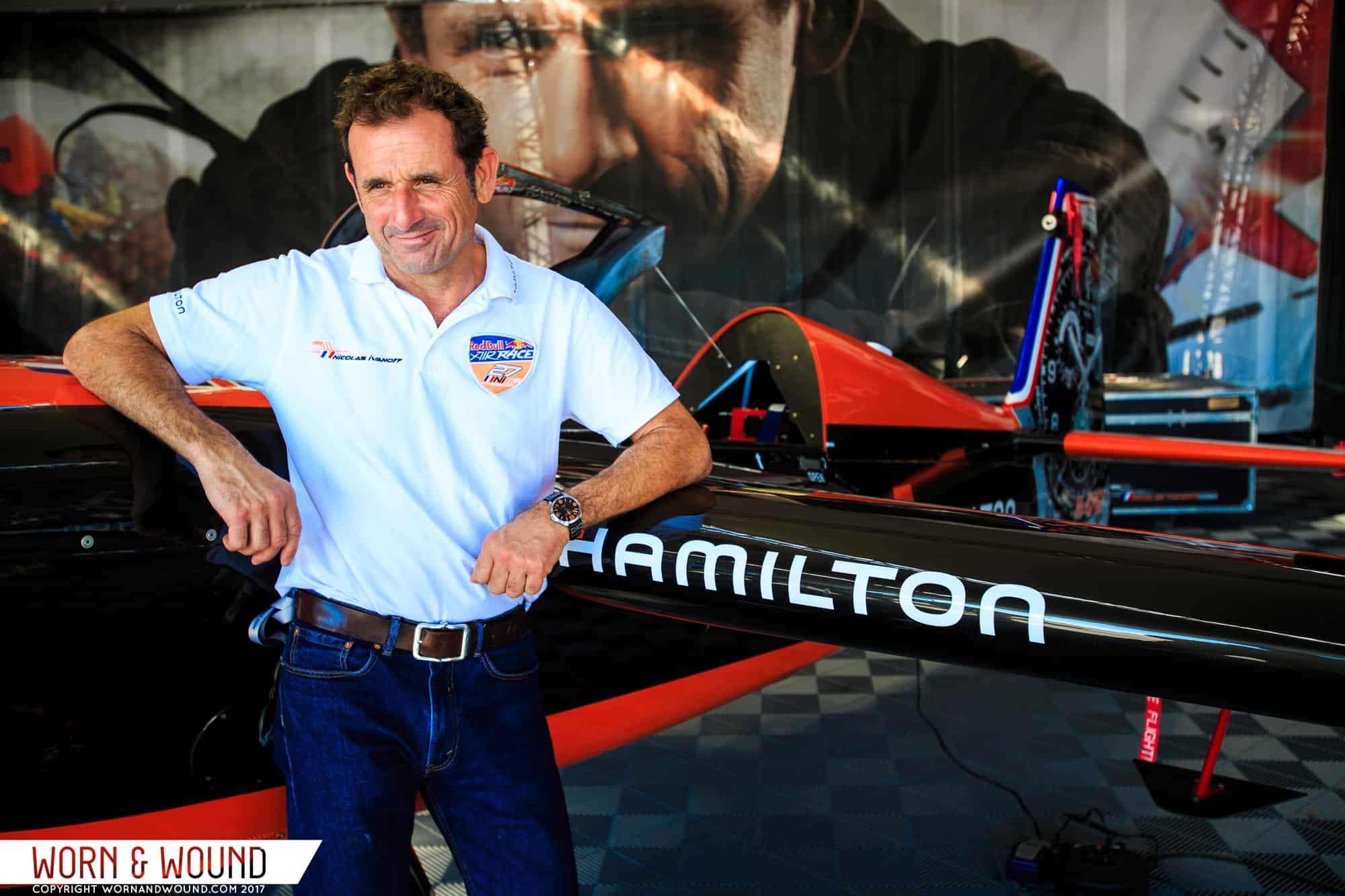
In fourth place, with an outside chance at the trophy coming into Indianapolis, was series veteran Kirby Chambliss. Fifty-seven years old and with a wealth of aerobatic experience stretching back to the ’80s, the American ace is no stranger to the pilot’s seat. He’d won the title twice before, earning the Red Bull Air Race series crown in 2004 and 2006, and he has built a reputation as a tough, unflappable flier capable of unbeatable speeds on the right day.
The next contender sitting in third was Canadian pilot Pete McLeod. McLeod was a bit of a dark horse in the title hunt, having collected the 2017 Fastest Laps award at the previous round in Lausitz, Germany. But McLeod was also well known to be a sensitive jockey behind the stick. In high winds or unpredictable conditions, he has a reputation for conservative flying that leaves him vulnerable to more aggressive foul-weather pilots.
In the championship runner-up position was one such pilot—the Samurai of the Sky, Yoshihide Muroya. This Japanese master’s flamboyant flying style and unusual two-handed grip on the control stick have earned him the “Samurai” moniker, and coming into the race Muroya had some additional motivation to take the win at Indy. 2017 Indy 500 champ and fellow countryman Takuma Sato had accompanied Muroya to this final round, both for moral support and to help secure a Japanese sweep at the Brickyard for 2017.
But even with the additional help, Muroya had his work cut out for him at Indy. In order to lift the 2017 championship trophy, he had to dethrone championship leader and title-favorite, Martin Šonka. Hailing from the Czech Republic, Šonka was more than just the favorite to win—he was title sponsor Red Bull’s poster boy and an ice-cold operator renowned for inch-perfect flying no matter the situation.









 Featured Videos
Featured Videos




